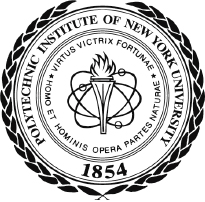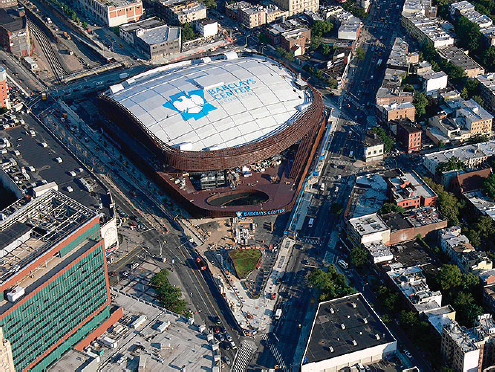George Bugliarello: His Leadership of the Polytechnic Institute and Vision of the Future
Richard S. Thorsen
Polytechnic Institute of NYU
ABSTRACT
George Bugliarello, first president of the Polytechnic Institute of New York University, was an urban visionary, philosopher, and realist. He predicted, decades in advance, the urbanization of the world’s population, and foresaw the engineering and other challenges associated with it. With this foresight he expanded civil engineering to include urban engineering at Polytech, and with his vision he laid the groundwork for not only the institute’s regeneration but also that of the surrounding community. Urban engineers, NYU-Poly, Brooklyn, and cities around the world are indebted to George Bugliarello for his vision and his ability to act on it very effectively.
UNDERSTANDING GEORGE BUGLIARELLO
George Bugliarello’s professional career was forged in urban environments: MIT (Cambridge-Boston), Carnegie Mellon University (Pittsburgh), the University of Illinois at Chicago Circle (Chicago), and Polytechnic (New York). He was the first president of Polytechnic Institute of New York1 (formed in 1973 by the merger of Polytechnic Institute of Brooklyn and the New York University School of Engineering and Science), and served until 1994.
___________________
1 Now Polytechnic Institute of New York University.

FIGURE 1 Seal of the Polytechnic Institute of New York University
George embraced change and was a leader who went about making change possible. His range of interests and expertise transcended many disciplines—civil engineering, biomedical engineering, urban development, science policy, water resources, and environmental science. He recognized that engineering was not an isolated endeavor but an integral part of the natural world and society. This concept was embraced in the word biosoma—which he coined from the contraction of biology, society, and machines—and eloquently expressed in the Polytechnic Institute seal (Figure 1), which George was instrumental in designing: Homo et Hominis Opera Partes Naturae. Man and the works of man belong to the natural world.
LEADER OF THE NEW POLYTECHNIC INSTITUTE
George’s 21-year presidency was characterized by change—at Polytechnic, in New York City, and in the world. Through it all he was capable of seeing the big picture, the big trends. One of those trends was the increasing urbanization of humanity.
George recognized the importance of engineering to successful urbanization, but also the need for input from multiple disciplines to determine what constituted success. The engineering of cities needed to be in the context of larger objectives and plans. He persuaded his academic home department, civil engineering, to embrace urban engineering, resulting in the department of civil and urban engineering, which is a sponsor and primary organizer of this symposium. He would also have embraced the newly created Center for Urban Science and Progress (CUSP) and Poly’s role in it.
In a conversation with George in 1976, he said, “Within our lifetime more than half of humanity will live in cities.” This forecast was realized in
2007 and, in efforts to dramatize the importance of cities, many have cited this reality.
When George joined Polytechnic he became the leader of a financially stressed institution, with a faculty too large for the size of the student body and location in a neighborhood infected with the worst elements of urban decay. After exploring options, which included relocating Poly, George and the board of trustees committed themselves to keeping the institute in Brooklyn and working with the city of New York and corporate leaders to renew its immediate surroundings. A 15-year plan to create the Metropolitan Technology Center, or MetroTech, emerged. MetroTech was part of three big strategies in George’s long-term vision for Polytechnic:
1. Rebuilding the local environment—urban decay replaced by MetroTech,
2. Refurbishing and building Polytechnic’s own facilities and infrastructure, and
3. Rebuilding the intellectual capital of the institute.
The first strategy took 15 years and resulted in an urban campus for Polytechnic. But MetroTech was more than a project to gentrify the surroundings of Poly and create a campus, both of which were necessary to attract students and faculty. It was the spark that ignited the transformation of downtown Brooklyn from a place to flee from to a major destination for hotels, shopping malls, residential towers, and waterfront development. In addition, an incubator for entrepreneurs creating new companies and the Barclays Center (Figure 2) followed on the heels of MetroTech—an idea brought to reality by George Bugliarello.
After creating a new environment for the institute’s surroundings, George recognized that we’d need to improve our educational infrastructure with renovated and new buildings. This would take money—a great deal of money by Polytechnic standards. Although much of the infrastructure transformation occurred after George stepped down from the presidency, his influence in advancing this dream was immeasurable. First, it was during his presidency that the Dibner Building we are now sitting in was built and what became the Wunsch Building was acquired as a landmark.
Perhaps of greater importance were gifts received after George’s presidency. He cultivated Donald and Mildred Othmer for 15 years of his presidency and maintained a personal relationship with them until their deaths. Along the way he was often criticized for spending resources on Professor

FIGURE 2 Barclays Center Adjacent to the MetroTech Campus in Brooklyn, New York
Othmer during periods of financial stress for Poly. George viewed this, as any good fundraiser would, as an investment. It was an investment that resulted in a $175 million cash gift from the Othmers, the largest cash gift ever received by an academic institution. It was responsible for two new buildings, the Othmer Residence Hall and, matched with a gift from Joe Jacobs, the Jacobs Academic Building. George had engaged the successful entrepreneur and alumnus Joe Jacobs in the life of Poly since 1976, and Jacobs became a $20 million donor to our successful Fulfilling the American Dream campaign.
Building the intellectual capacity of Polytechnic required urban renewal and infrastructure enhancement and is now proceeding at an accelerating rate as we become part of New York University.
George was a leader who knew that not all of his aspirations for Polytechnic would be realized during his presidency. But his commitment to the institute caused him to start the processes for others to complete toward the renewal and reemergence of Polytechnic as a leader for positive societal change.
URBAN VISIONARY AND PHILOSOPHER
In some sense George Bugliarello’s philosophy as it bears on cities or urban life is captured in biosoma, the concept that biological systems, social systems, and machines are part of a single organism that grows to maturity in cities. Furthermore, cities will be successful—that is, “livable”—when these are in harmony.
He also believed that such harmony was best achieved by adherence to core values. While these core values may find different expression in different societies and locations they ultimately come down to the values embraced in the US Declaration of Independence: all people are created as equals and entitled to life, liberty, and the pursuit of happiness.
City life is characterized by a collective approach to collectively important issues while preserving core values for all. Life has been extended through enhanced health care. Could a robust healthcare system exist in a totally nonurban distributed population? Could energy be delivered effectively to a totally dispersed population? What would education systems look like in such a society? Clearly urbanization has made some things better than they would be in a society without cities.
George believed in the merits of urbanization as the best path for society, but he also recognized threatening issues. We can present a utopian view of future cities, but realities must be faced to achieve that utopia. These concerns were perhaps overstated in another time by a great American statesman:
When we get piled upon one another in large cities, as in Europe, we shall become as corrupt as Europe.
Thomas Jefferson may be forgiven for this overly pessimistic view of cities. He could not have foreseen the rise of skyscrapers made possible by steel cables—cables that were invented by Poly alumni for the Brooklyn Bridge and that in turn made elevators possible—or telecommunications technology or centralized power generation.
But as George knew there are some residual assumptions from our rural and agrarian beginnings that may have to be addressed if a utopian vision of the future is to be achieved. What are the best power generation and delivery systems to ensure the healthiest urban environments? Can individual rights to bear arms in densely populated urban environments continue to be justified? Perhaps the greatest challenge will be in the area of individual liberties, which can easily come in conflict with the collective need or collective good in an urbanized society.
For example, privacy becomes a major concern when millions of people are “piled upon one another.” But Jefferson and the founders were not particularly concerned about privacy. They foresaw a minimalist government, electronic databases didn’t exist, and society was relatively dispersed. In fact, for all of its wonderful provisions intended to preserve individual liberties, the US Constitution has no explicit guarantee of individual privacy—it was essentially a nonissue in the United States in 1787. But it is a burning issue today and going forward. George recognized this.
The population and resource density of cities make them target-rich environments for those who would seek to inflict harm on others. The consequences of modern warfare for cities become incomprehensible whether we’re talking about nuclear weapons or cyber attacks. One of the reasons George embraced his role as international secretary for the National Academy of Engineering was his belief that individuals coming together shed their differences when working for a common goal.
Although George the realist was aware of these and other potential threats, he never lost his optimism. He was confident of this country’s ability to confront and resolve conflicts arising from competition between individual liberties and collective needs in an urban environment on the one hand, and the vulnerability of cities to hostile threats of many varieties on the other. He remained a believer in the utopian view of cities of the future, and it is our honor to dedicate this symposium and its proceedings to his memory.






